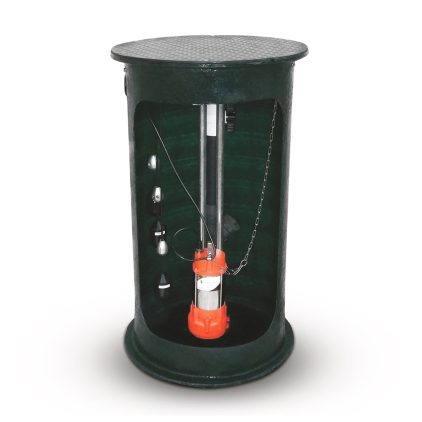Displacement and velocity are the two most popular methods for measuring flow, and each one uses a different set of technologies. The oscillating piston and nutating disc meters are examples of typical displacement designs. Turbine meters and single- and multi-jet meters are examples of velocity-based designs.
Additionally, there are non-mechanical designs including electromagnetic and ultrasonic meters as well as meters made for specific purposes. In a normal water distribution system, the majority of meters are only intended to measure cold potable water. Design materials for specialty hot water meters can tolerate higher temperatures. Reclaimed water meters have unique lavender register covers to indicate that the water should not be consumed.
There are other electromechanical meters, such as automatic meter reading meters and prepaid water meters. The latter combines a mechanical water meter with an electronic measurement component and an LCD. The signal output for mechanical water meters often comes from a reed switch, hall, or photoelectric coding register. Data are sent to the LCD or sent to an information management system after processing by the microcontroller unit (MCU) in the electronic module.
A public water provider, whether a city, rural water association, or private water corporation, often owns, reads, and maintains water meters. In some instances, a utility may bill the owner of a mobile home park, apartment building, or commercial structure based on the reading of one meter, with the costs being divided among the tenants according to some sort of key (size of the apartment, the number of occupants, or by separately monitoring the water consumption of each unit, a practice known as submetering).
WATER DISPLACEMENT METER
Positive displacement, or “PD” meters, are the usual name for displacement meters. Nutating disk meters and oscillating piston meters are two popular varieties. In either case, the movable measuring element is physically displaced by the water in direct proportion to the water flow through the meter. The piston or disk moves the register’s driving magnet.
At the low-to-moderate flow rates typical of household and small business users, PD meters are typically fairly precise and typically range in size from 5/8″ to 2″. Displacement meters often are not practicable in big commercial applications needing high flow rates or little pressure loss since they depend on all water flowing through the meter to “push” the measurement element. The measuring element of PD meters is typically shielded from rocks and other objects that could halt or break it by an integrated strainer. PD meters typically have plastic, bronze, brass, or moldable plastic bodies with stainless steel and plastic measurement chambers inside.
WATER VELOCITY METER
A velocity-type meter calculates the flow rate through a known internal capacity meter. The utilization can then be calculated by converting the flow’s speed into its volume. Water flow velocity can be measured by a variety of meters, including single-jet and multi-jet jet meters, turbine meters, propeller meters, and mag meters. The majority of velocity-based meters contain an adjustment vane to allow for the meter’s accuracy calibration.
SEVERAL-JET METER
Multi-jet meters are frequently used in sizes between 5/8″ and 2″ for home and small commercial users since they are particularly precise in tiny sizes. The water jets produced by multi-jet meters are directed against an impeller whose rotational speed is governed by the water flow velocity through a series of ports around an interior chamber. Multi-jets are exceedingly precise at low flow rates, but as they lack the straight-through flow channel required for high flow rates used in big pipe diameters, there are no large size meters. The internal strainer feature of multi-jet meters often prevents the jet ports from becoming clogged. Typically, multi-jet meters feature bronze alloy bodies or outside casings, with contemporary thermoplastics and stainless steel used to make the inside measuring components.
CONVERGENCE METER
At low flow rates, turbine meters are less precise than displacement and jet meters, but the measuring element does not completely obstruct or substantially impede the flow stream. In comparison to displacement-type meters, the flow direction through the meter is often straight, allowing for larger flow rates and less pressure loss. For large business users, fire protection, and master meters for the water distribution system, they are the preferred type of meter. In order to protect the measuring element from gravel or other particles that can enter the water distribution system, strainers must often be positioned in front of the meter. Turbine meters are typically offered for pipe sizes ranging from 1-12″ to 12″ or higher. Bronze, cast iron, or ductile iron are frequently used as materials for turbine meter bodies. Plastic or non-corrosive metal alloys can be used as internal turbine elements. Although the flow profile and fluid conditions have a significant impact, they are correct under normal working conditions.
Specialized turbine meters called “fire meters” can handle the high flow rates needed for fire protection. They frequently have Factory Mutual (FM) or Underwriters Laboratories (UL) approval for use in fire protection.
In order to measure the amount of water flowing out of a fire hydrant, special portable turbine meters called fire hydrant meters are mounted to the hydrant. The meters typically have a 3′′ capacity and are manufactured of aluminum to keep weight to a minimum. They are frequently required by utilities for monitoring water consumption on building sites, for filling swimming pools, or in other locations without permanent meters.
COMBINATION METER
When high flow rates are required yet occasionally smaller flow rates also need to be precisely recorded, a compound meter is utilized. A check valve controls the flow between the two measuring parts of compound meters. Water is typically routed mostly or entirely to the high flow element at high flow rates. A turbine meter is often used as the high flow component. A check valve closes to direct water to a smaller element that can monitor the lower flow rates precisely when flow rates fall to the point where the high flow element can no longer record them reliably. A multi-jet or PD meter is often the low flow component. The utility keeps track of the overall amount of water consumed by summing the values recorded by the high and low elements.
Electrical flow meter
Although technically a velocity-type water meter, magnetic flow meters, sometimes known as “mag meters,” calculate the water flow velocity using electromagnetic qualities as opposed to the mechanical methods employed by jet and turbine meters. The electromagnets in mag meters must be powered by AC or DC electricity from a power line or battery in order to function, and they use the physics principle of Faraday’s law of induction for measurement. Mag meters often have the advantage of being able to measure flow in any direction since they lack a mechanical measuring device. Instead, they employ electronics to measure and totalize the flow. Since there is no mechanical measuring element that can be clogged or damaged by debris flowing through the meter, mag meters can also be effective for measuring raw (untreated/unfiltered) water and waste-water. Since there is no measuring element in the stream of flow that could be harmed, mag meters do not require strainers. The majority of mag meters are built with either grounding rings or grounding electrodes to direct stray electricity away from the electrodes used to measure the flow inside the flow tube since stray electrical energy flowing through the flow tube might result in false results.
USING ULTRASONIC METER
In order to measure the water’s velocity, ultrasonic water meters use one or more ultrasonic transducers to send ultrasonic sound waves through the fluid. When the velocity of the water is measured, it is possible to determine the volume of water passing through the meter with a high degree of accuracy since the cross-sectional area of the meter body is a set and known value. Most ultrasonic water meters measure the water temperature as part of the volume computation since water density varies with temperature.
In water metering, there are 2 main ultrasonic measurement techniques used:
Doppler effect meters that use the Doppler Effect to calculate how fast water is moving through the device.
Transit Time meters are used to determine how long it takes an ultrasonic signal to travel between two or more fixed sites within the meter.
The design of ultrasonic meters can either be “clamp-on” or “flow-through.” Designs known as “flow-through” are those in which the water flows straight through the meter; they are frequently used in residential or commercial settings. For bigger diameters when the sensors are placed to the outside of pipelines, etc., clamp-on types are typically employed.
Residential meters can measure down to 0.01 gallons or 0.001 cubic feet, making ultrasonic water meters (if built in) often quite accurate. Additionally, because they don’t have any internal mechanical components that could break down, they offer broad flow measurement ranges, need no maintenance, and last a very long time. Ultrasonic meters have been utilized in commercial applications for many years, despite being relatively new to the American water utility sector, and are gaining popularity because of their benefits over conventional mechanical designs.
ADVANCED WATER METER
Depending on the type of payment, meters might be postpaid or prepaid. Electromagnetic and ultrasonic meters, as well as the majority of mechanical water meters, are prepaid models. Prepaid water meters allow users to prepay for a specific volume of water at a vending machine. On a piece of media, like an IC or RF type card, the amount of water credited is recorded. The primary distinction is whether the card requires interaction with the prepaid water meter’s processing section. In some places, the interface for entering the water credit on a prepaid water meter is a keypad.


